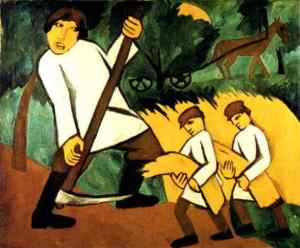Joy House
This is a harrowing and powerful piece of theatre about the first few women forced to be prostitutes in 1942 when Himmler opened brothels in the concentration camps.
The women were told that they would be freed, fed and have warmth if they 'volunteered'. Those that were desperate enough to believe these lies were told to take five steps forward.
For the women who survived in the Sonderbau, the first brothel for Buchenwald concentration-camp prisoners, talking about their experiences was virtually impossible. The topic was, and still is, taboo.
Director and writer Firenza Guidi has succeeded in giving these women a voice. Interspersing the scenes of the brutality with personal details and tender moments when the women try to help each other, she gives us glimpses of humanity - small sparks in the darkness.
With a cast of ten women and three men, this is an innovative and ambitious production by the final year students at RWCMD.
The audience is not static, but encouraged to move with the actors, often inadvertently becoming part of a scene as onlookers sometimes separated by the barbed wire fences, sometimes not. This is uncomfortable and totally immersive. Beginning on an upper level railway track and descending with the women into the hell of the camp, we follow the actors through stark, minimalist settings with mostly subdued and occasionally brutal lighting that heightens the tension as the women are stripped of every shred of dignity and hope.
Firenza Guidi,in an interview on Radio Wales, states that an influential dance tutor of hers (and author of the biography A Time to Speak) survived Auschwitz and still had the number branded on her arm. This made a strong impression on Guidi, and she wrote the play to give these forgotten women a voice. She has a long history of writing strong parts for and about women including: The Miracle set in 1789 about women sentenced to seven years transportation to Australia on a ship known as the floating brothel, and Fear No Man's Return, an adaptation of the Trojan Women.








